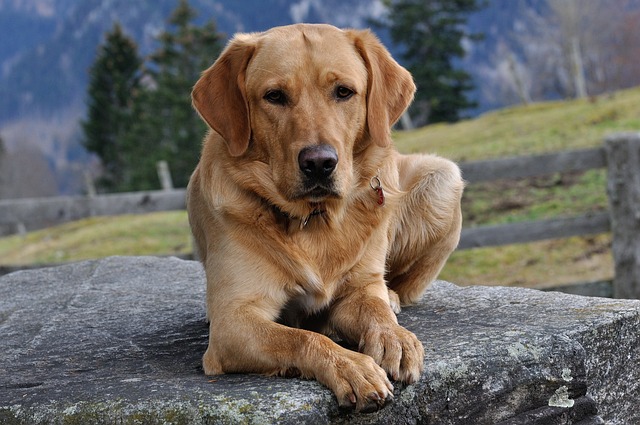
How can I tell if my dog's heatstroke is serious
Let’s be real: It’s a sticky August morning in Los Angeles, and you took your 2-year-old Golden Retriever, Max, for a walk a little later than usual
How do you maintain a dog's coat? If you’ve found tufts of your golden retriever “Bailey’s” fur clinging to every couch cushion, or noticed his once-shiny coat looking dull and matted, you’re probably wondering how to turn things around. A healthy coat isn’t just about looks—it’s a sign your dog is happy and healthy. From short-haired Chihuahuas to long-haired Shih Tzus, every pup needs a little TLC to keep their fur in top shape. Let’s break down the basics.
A dog’s coat is more than just fur—it’s a protective layer made of dead hair follicles, oils, and skin. Those natural oils keep fur soft and water-resistant, while regular shedding gets rid of old hair to make room for new growth. When the coat looks messy, it’s often because something’s throwing off this cycle: dry skin from harsh shampoos, matted fur from lack of brushing, or even a diet missing key nutrients like omega-3s. My friend in Vermont noticed her husky “Luna’s” coat got brittle in winter—turns out, the dry indoor air was zapping her skin’s oils, and a simple switch to a moisturizing shampoo made a world of difference.
Brushing is your first tool, and how often depends on the coat. Short-haired dogs like beagles need a quick brush once a week to remove loose fur; long-haired breeds like collies need daily sessions to prevent mats (those tangled clumps that pull on the skin and hurt). Use a rubber brush for short coats—it massages the skin and collects loose fur—and a slicker brush for long hair to work through tangles. Make it a positive experience: start with 2-minute sessions, offer treats, and praise your dog. My neighbor in Arizona’s lab “Max” used to run when he saw the brush, but now he leans into it for the belly rubs that follow—positive reinforcement turns a chore into bonding time.

Bathing matters, but less is more. Over-bathing strips natural oils, leaving coats dry. Most dogs need a bath every 1-3 months, or when they roll in something stinky. Use a dog-specific shampoo (human products are too harsh) and rinse thoroughly—leftover soap irritates skin. Afterward, towel-dry or use a low-heat blow dryer; damp fur can mat easily.
Diet plays a huge role, too. A food rich in protein and omega-3s (like fish oil) keeps fur shiny and skin healthy. Look for “salmon” or “flaxseed” on the ingredient list—these are good sources. If your dog’s coat is dull, talk to your vet about adding a fish oil supplement; just a pump on their food can make a difference.
Coat care ties into responsible pet ownership. Keep your dog’s rabies vaccine current—required by 4 months in all U.S. states, with fines up to $500 in Los Angeles. A healthy dog grooms themselves better, so staying on schedule helps. When walking, carry poop bags (fines in Chicago hit $250 for skipping) and brush your dog afterward if they rolled in dirt—this keeps your home clean and their coat manageable.
Apartment dwellers, invest in a lint roller and a small brush for quick touch-ups between deep grooming sessions. At dog parks, avoid letting your dog roll in mud or grass clippings if their coat is prone to matting—it saves time later. And never yank a brush through mats—use a detangler spray and work slowly, or ask a groomer for help.
With consistent care, your dog’s coat will shine. When Bailey trots over, fur soft and glossy, and you don’t find a single new tuft on the couch? That’s the reward—proof that a little love goes a long way for your pup’s comfort and your home’s cleanliness.

Let’s be real: It’s a sticky August morning in Los Angeles, and you took your 2-year-old Golden Retriever, Max, for a walk a little later than usual

You're enjoying a summer afternoon at the park when you notice your dog has stopped panting and appears disoriented - their gums are bright red

Let’s paint the picture: You’re in your Denver apartment, watching your 4-year-old Boston Terrier, Ruby, plop down mid-play session with her favorite toy

Many dog owners notice their pets nails seem shorter after regular walks,but how much does this daily activity actually help?The answer depends on where you walk—concrete sidewalks or asphalt streets gently file nails as a dog's paws hit the ground

Most dog owners notice their pup scooting across the carpet at some point, but few connect it to impacted anal glands. These small sacs near a dog’s rectum secrete a scent for marking territory

Most vets agree that regular dog teeth cleaning is key to avoiding painful dental issues later. For healthy adult dogs, a professional cleaning at the vet’s office every 12 to 18 months usually works well.